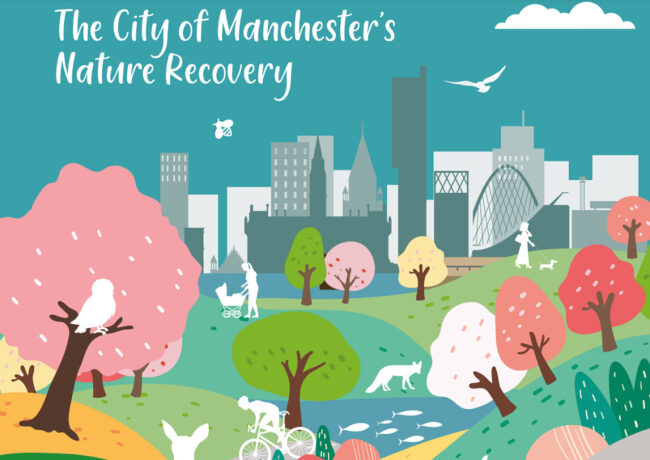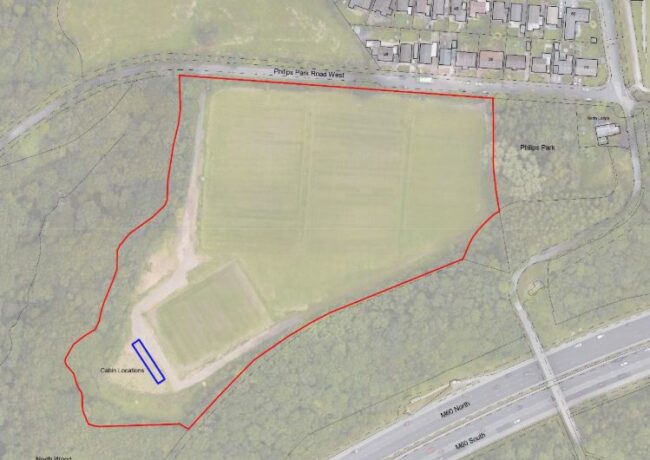Manchester outlines biodiversity strategy
The city council has unveiled ambitions to create two additional local nature reserves in the city, as well as plans to ensure biodiversity is embedded within planning and development policies.
Manchester’s Biodiversity Strategy 2022-2030 is to be put in front of the local authority this week. The document builds on Manchester’s signing of the Edinburgh Declaration, a pledge to tackle biodiversity challenges and the climate crisis, last year.
Under the proposals, new local nature reserves would be created. Already, the council has unveiled plans for the first two of these sites: Broadhurst Clough in Moston and Kenworthy Woods in Northenden. The council’s executive to formally declare the new status of these sites within the coming months.
As local nature reserves, these sites will need to be protected and cared for by the local authority. Future developments will have to factor in possible impacts on the local nature reserves during the planning process.
If the council’s proposals for Broadhurst Clough and Kenworthy Woods move forward, the two sites would join Manchester’s current roster of eight local nature reserves. The city also has 37 sites of biological importance.
Other key elements of Manchester’s biodiversity strategy include:
- Ensuring priority wildlife sites are in active management by 2030
- Developing key species action plans
- Supporting communities in their biodiversity initiatives through the Manchester Biodiversity Action Group
- Embedding biodiversity initiatives in city council policies
- Finding and utilising funding opportunities for biodiversity net gain within the planning and development process
- Informing the biodiversity-related policies within the city’s new local plan
Cllr Tracey Rawlins, executive member for environment at Manchester City Council, said: “Putting biodiversity at the heart of plans and development is part of our approach as caretakers of our environment and is part of a wider agenda fitting in with what we’re doing to mitigate the impacts of climate change in the city.
“We know that nature is important to our residents, so we need to encourage nature-friendly policies that benefit people and wildlife alike. However, we can’t do this alone and everyone has a part to play in safeguarding our biodiversity and we’ll only achieve our ambition if everyone from gardeners through to developers work together.”
Rawlins continued: “Our plans will form the bedrock of everything that we do; promoting the sustainable growth of the city, improving the health and wellbeing of residents, supporting climate resilience, better sustainable transport, as well as helping to reduce flood risk and improve air quality.”
While the city council has acknowledged work on increasing biodiversity needs to be done, it did take a moment in its strategy to celebrate a few achievements. Barn owls have begun nesting in Manchester for the first time in more than 75 years, the council said. Otters have also been spotted in rivers, signalling that these waterways are becoming healthier and cleaner.
What is more, the Black Redstart, a bird that is rarer than the golden eagle, has proved to be a Manchester fan. The bird both lives and breeds within the city.
Manchester’s biodiversity strategy was developed in partnership with Lancashire Wildlife Trust for Greater Manchester.
Other contributors to the strategy include Natural England, The Environment Agency, The Wildlife Trust for Greater Manchester, Greater Manchester Ecology Unit, Royal Society for the Protection of Birds, City of Trees, Canal and River Trust, Conservation Volunteers, Manchester Metropolitan University, Manchester Museum, and the University of Manchester.





Central Retail Park?
By Moneywhereyourmouthis
Agree with moneywhereyourmouthis. That is a perfect site for this. Wherever they choose, I hope that they maintain it to a better standard than the Moston one.
By Elephant
I’m not sure a £13m spend on a development site in a city centre for it to become a nature reserve would be an efficient use of taxpayers money. Too densely populated around it and too small a site for it to be left undisturbed for the benefit of nature.
By harpisord
Agree with Moneywhereyourmouthis, they need something in the city centre if they are serious about biodiversity.
By Anonymous
If you are MCC and paid top dollar for that Central Retail Park site for a commercial real estate strategy, and own large tracts of much less valuable land further out, why would use it as for a biodiversity strategy. Yes, that part of town needs more green space, but a nature reserve?
By Rich X
Agree with Elephant here, nature reserves are great and much needed, but these should be outside the city centre where other amenities are needed just for day to day life. Pockets of green and canal access within these will mould parts of the city centre together, but full nature reserves is a poor use of space in a city where land prices are already extortionate.
By Elephant Too
City centre is more visionary look at Central park in NY! if they project the city centre population to increase in 10-15 years it makes sense to have it there.
By Anonymous
Central Retail Park as a Nature Reserve – bonkers
Would rather have the Council’s plans for 10,000 jobs and a high quality public realm that links Gt Ancoats Street to New Islington Park and Marina that is there.
By Anonymous
This is encouraging, thanks for running this article.
What if we, as a city, showed our commitment to this by accelerating the requirement for Biodiversity Net Gain in local planning policy ahead of the requirements arising from the Environment Act in 2023?
As a designer I would love to be having more meaningful conversaiotns with project teams about increasing biodiversity now, with the support of robust policy.
By Paul
The Black Redstart is indeed fairly rare and previously was mainly found in London and the W.Midlands, however pairs have appeared in Manchester, Liverpool, Nottingham and around Suffolk, but like any sensible being they will migrate to the Mediterranean in winter.
By Anonymous
David Attenborough calls for ‘re wilding’ where places are not managed but allowed to ‘do their own thing’…..this contradicts the ‘managed areas’ surely…?
By Rodders